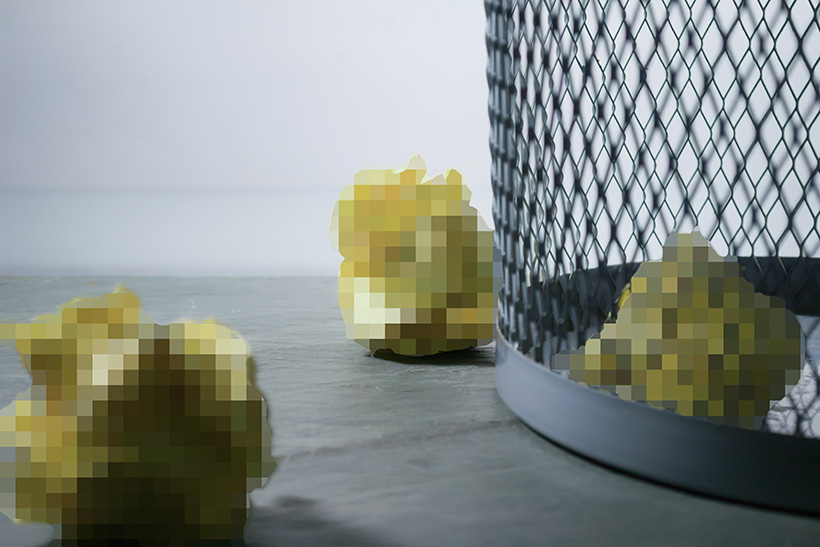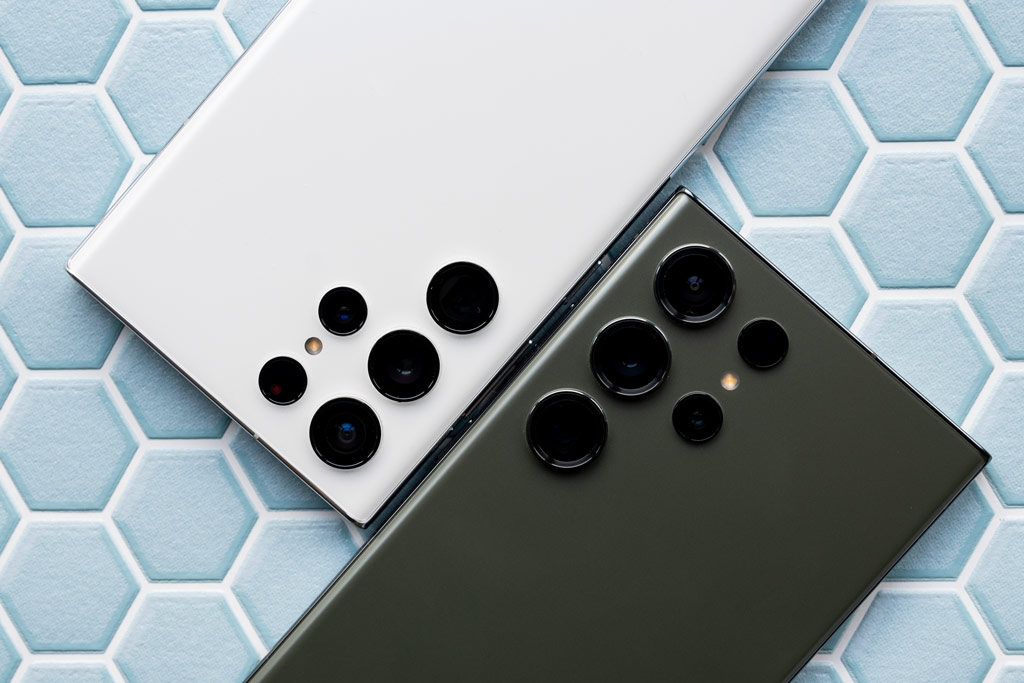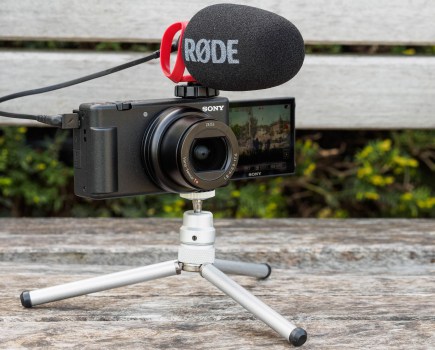Several of the latest smartphones have super high-resolution sensors, forming a key part of the marketing messaging. One of the biggest profile devices of late is the Samsung S23 Ultra, with its 200-megapixel sensor. Our review found it to be quite probably the best of the best smartphones for photographers available to buy right now. But do you need a so many megapixels? Below, Amy Davies finds out if super high resolutions are worth the hype.
The S23 Ultra features four different camera sensors, with the main one, packed with a whopping 200 megapixels. That’s a boost from the already super-high resolution S22 Ultra, which had 108 megapixels.
Samsung is not the first to include a 200-megapixel sensor in its smartphones, even if it is probably the most famous – or at least the one with the biggest marketing budget. The Xiaomi 12T Pro (October 2022), the Motorola Edge 30 Ultra (September 2022) and Infinix Zero Ultra (October 2022), also have 200-megapixel sensors – though it’s worth noting that those sensors are indeed made by Samsung itself.
This kind of extremely high figure is becoming more and more commonplace as time goes on, so expect to see it trickling down into even mid-range devices at some point soon. Even Apple, which famously stuck with its 12 megapixel iPhone for many generations finally relented and pushed the iPhone 14 Pro up to 48 megapixels for its main sensor.
It’s probably safe to assume that Apple won’t go towards 200 megapixels for some time yet – the company usually prefers to wait and see how the tech land lies before jumping. It also uses bespoke sensors created by Sony, which is currently not making a 200-megapixel phone sensor.
Pixel Binning
Although several smartphones use very high-resolution sensors, by default images will be tend to be output at 12 megapixels. It does this by pixel binning.
What is pixel binning?
Essentially, pixel binning means that the sensor groups together (or ‘bins’) adjacent pixel to make one larger pixel.
What is the purpose of pixel binning?
Pixel binning reduces noise and is ideal for something like a smartphone which uses a very small sensor compared to a standard DSLR or mirrorless camera.
To find out more see our explainer article on pixel binning and smartphone sensor technology.
Common examples of pixel binning include 2×2, 3×3 or 4×4 binning, however the Samsung S23 Ultra, with its 200-megapixel sensor bins together 16 pixels into one (by default).
Where things get more complicated is when we come to consider colour. Image sensors use red, green or blue colour filters over their pixels in order to sense colour. However, pixel binning only works with pixels of the same colour. The S23 Ultra’s 200MP sensor places 4×4 blocks of pixels under one colour filter, while the S22 Ultra’s 108MP sensor places 3×3 blocks under each filter.
As a result, both sensors actually have a colour resolution of 12MP. This limits the visible differences between them, and also means that neither can match the quality recorded by a ‘proper’ 100MP camera such as the Fujifilm GFX100S.
If you want to, you can choose to shoot at a higher resolution and take full advantage of all of those pixels. With the Samsung S23 Ultra you can elect to record either 50 megapixels (4×4 binning), or the full 200 megapixels if you prefer. If you use either the ExpertRAW app or the Pro mode, you will be limited to recording at 50 megapixels.
It’s worth noting too that since only the “main” sensor of the Samsung S23 Ultra has 200 megapixels, as soon as you switch to using a high resolution mode, you’ll lose access to the other lenses (which are backed by 12 megapixel or 10 megapixel sensors).
Another point to note is that if you activate 50MP/200MP shooting, the macro mode will no longer work. This is because macro focusing relies on the ultra-wide angle lens. It’s therefore true that if you want to shoot extremely high-resolution very close-up images, you’ll be out of luck.
Small (in this case, tiny) pixels crammed onto a smartphone sensor can often be a recipe for high noise results, so it’s likely that you’ll get the best 200-megapixel images if shooting bright or well-lit scenes. But we’ll take a look at some examples and see how it fares…
Examples of photos taken with the Samsung S23 Ultra’s 200MP sensor
Shot in bright daylight, here’s the same scene shot with 200 megapixels, 50 megapixels, or output at the default of 12 megapixels. It’s pretty hard to see much of a difference between the three when looking at them at normal web size. If you’re only ever intending to share your images on Instagram and the like, even in good light, there’s very little advantage to shooting at 200 megapixels.
We can see more of a difference if we zoom in closely and examine the detail that way. Although the overall impression of detail in all three images is good, there is some image smoothing going on as soon as you start to zoom in.
If we were to create a 100% crop of the 200-megapixel image, you can see the resulting image suffers from loss of detail and smudging. It’s therefore really only if you want to make enormous prints viewed from some distance that you’d probably elect to shoot at 200 megapixels.
In our examples here, some colour fringing is visible around the lettering on the noticeboard, which seems to be a common problem when you closely scrutinise images taken with the 200MP sensor. It’s likely this is a result of a 200-megapixel sensor with only 12 megapixels of colour resolution, and in fairness, is exactly what we should probably expect and not really how the phone is intended to be used most of the time.
Probably the best overall results under this kind of scrutiny in the 50-megapixel image, giving a good balance of high resolution and good image quality. Neither is likely to be enough to trouble the average full-frame sensor with 40 megapixels or higher, though.
As predicted, low-light images shot at 200 megapixels show up even more loss of detail if you zoom in at 100%, although in fairness the overall impression of detail is pretty good and not overly noisy. That said, the overall impression is not any better than shooting at 12 megapixels.
Indeed, in our S23 Ultra vs S22 Ultra piece, we found that the detail recorded in the standard 12-megapixel output format does appear to be better with the 200 megapixel phone. That said, this could be a result of a change in software – such as ramping up of sharpening – and is not necessarily a direct result of the extra pixels. Again, too, the overall impression of detail at normal printing and sharing sizes between the two devices is pretty similar.
Conclusion: Do you need 200 megapixels?
There’s no denying that the Samsung S23 Ultra is an excellent smartphone. In fact, we think it’s very likely the best smartphone for photographers.
However, if we’re to examine whether or not 200 megapixels is necessary – we’d have to come up with a firm ‘probably not’. Yes, there might be the odd person who has a desperate desire to create bus-sized prints from their smartphone, but for the average person who wants to share on Instagram, or perhaps create A4 prints, then it’s simply not necessary.
If you’re already in possession of a Samsung S22 Ultra, for example, or any other phone with a decent pixel count, you shouldn’t feel the need to immediately jump to pick up the S23 Ultra purely for the pixel count alone.
Check out our Samsung Galaxy S22 Ultra and Samsung Galaxy S23 Ultra reviews. To see more of our smartphone reviews, click here.
Related articles:
- Samsung accused of using AI to take ‘fake’ detailed moon photos
- Samsung S23 Ultra vs Samsung S22 Ultra: Do you need an upgrade to a 200MP smartphone?
- Best camera phones for photography in 2023
- Best used smartphones to buy in 2023















